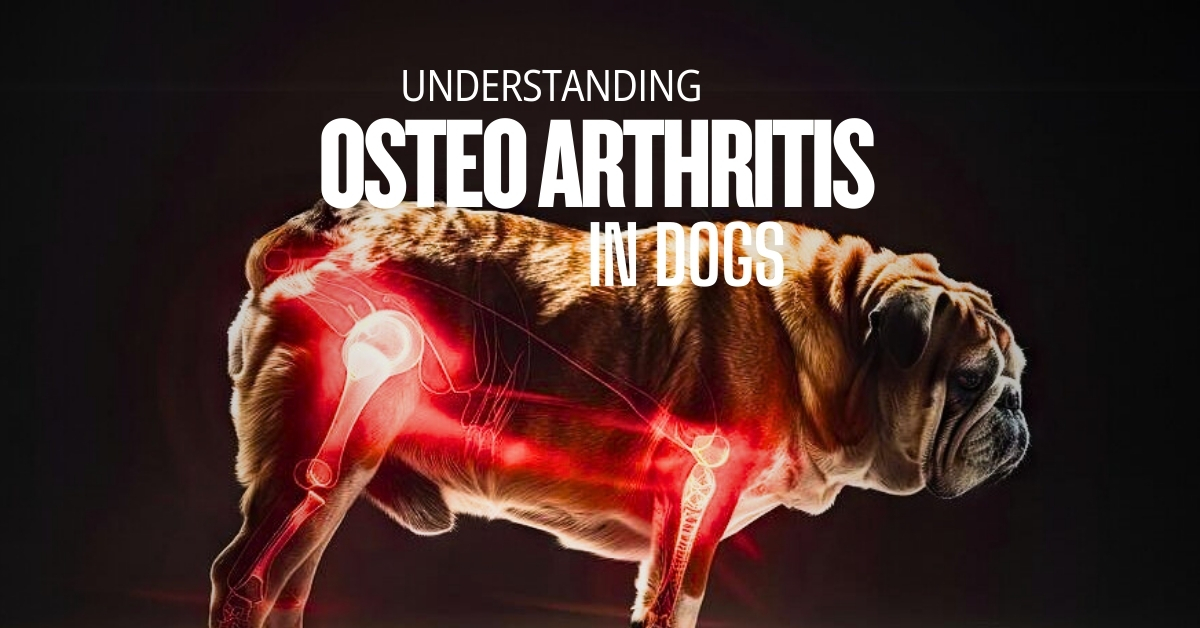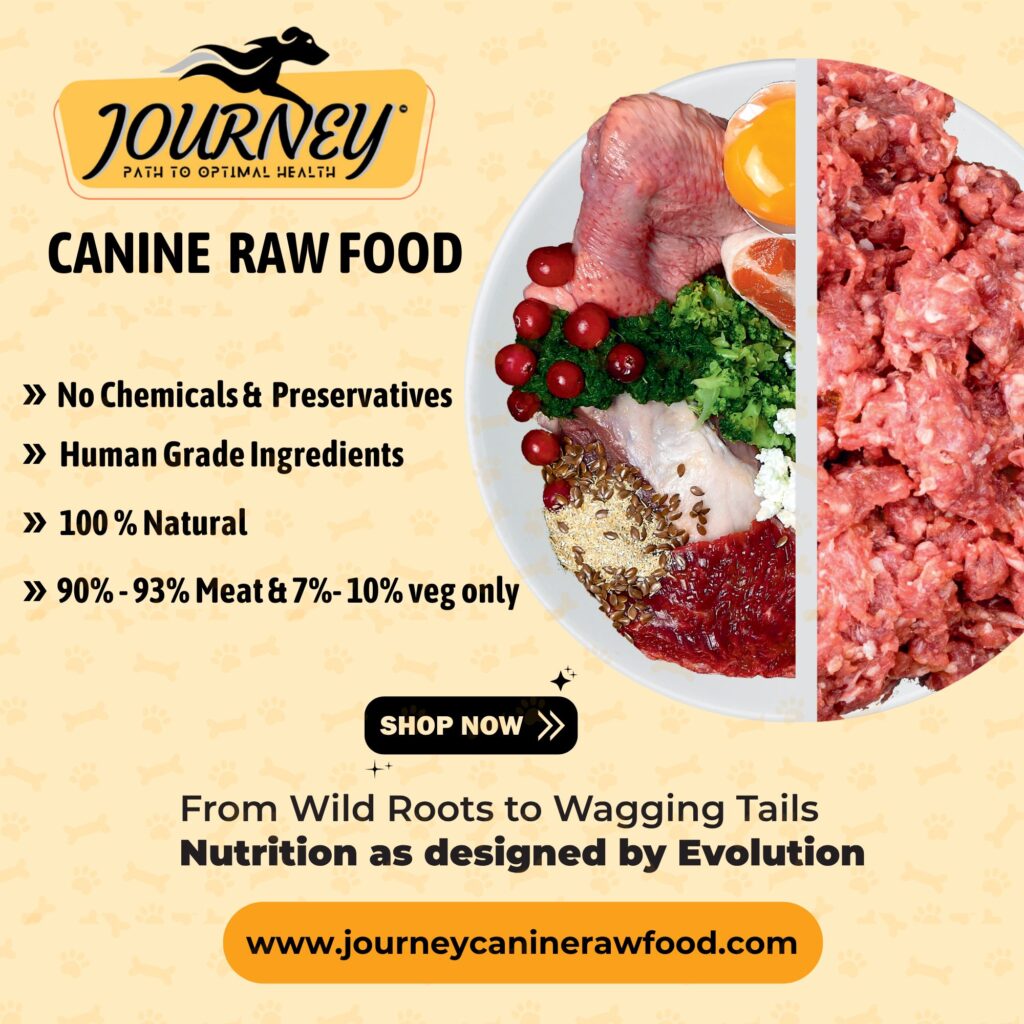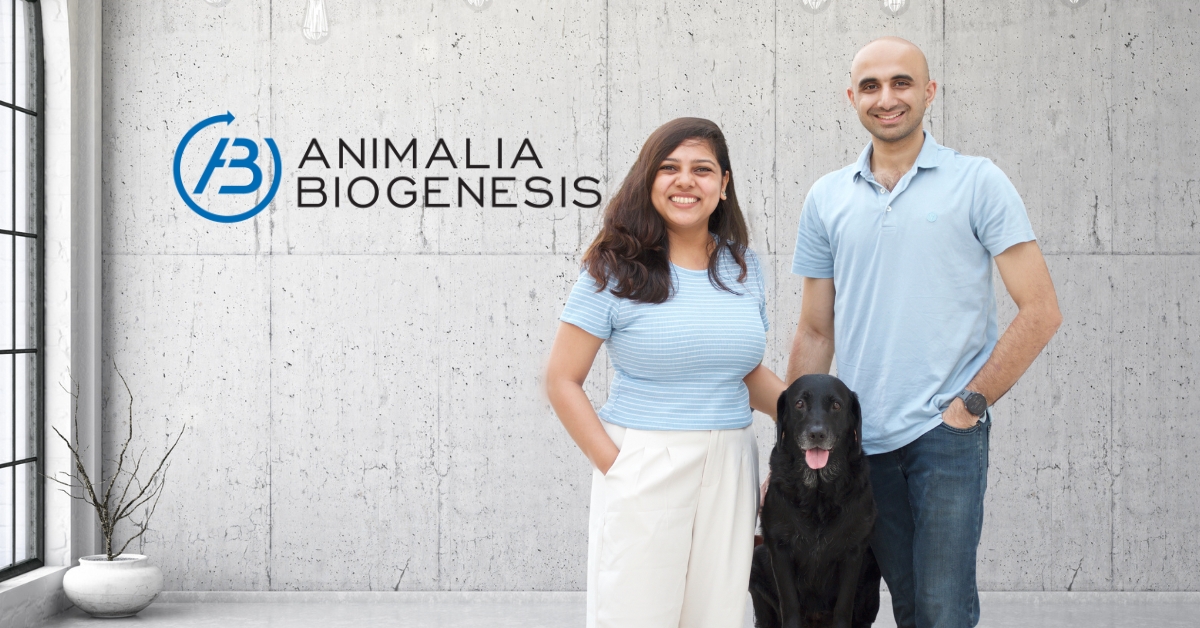The Silent Struggle: Osteoarthritis in Dogs
As pet owners, we often find ourselves oblivious to the silent struggles our furry companions endure. One such condition that affects millions of dogs worldwide is osteoarthritis (OA), a degenerative joint disease that can severely impair mobility and quality of life. According to the American College of Veterinary Surgeons, OA is characterized by the progressive loss of articular cartilage, bone remodeling, and joint inflammation, leading to pain and stiffness. Alarmingly, research indicates that approximately 20% of dogs exhibit signs of OA by their first birthday, escalating to 80% by the age of eight. Understanding this condition is vital for ensuring our pets lead healthy, active lives.
Unpacking the Risk Factors

Osteoarthritis does not discriminate; it can affect any dog regardless of breed or size. However, certain risk factors significantly increase the likelihood of developing this painful condition:
– Age: As dogs age, their cartilage regeneration capabilities diminish, heightening their susceptibility to OA.
– Obesity: Excess weight places undue stress on joints, leading to chronic inflammation and accelerated cartilage degradation.
– Genetics: Certain breeds, including Labradors, Bernese Mountain Dogs, German Shepherds, and Golden Retrievers, are genetically predisposed to OA due to specific candidate genes like NOG and NANOS1.
– Trauma: Previous injuries can disrupt the integrity of joints, leading to chronic arthritis development.
– Nutritional Deficiencies: A lack of essential nutrients such as calcium, phosphorus, magnesium, and vitamins D, E, C, and K can compromise joint health.
– Neutering & Spaying: Early-age neutering has been linked to an increased risk of joint disorders due to hormonal imbalances that may promote obesity.
Understanding these risk factors can empower pet owners to take proactive measures in preventing OA or managing its progression.
The Pathophysiology of Osteoarthritis
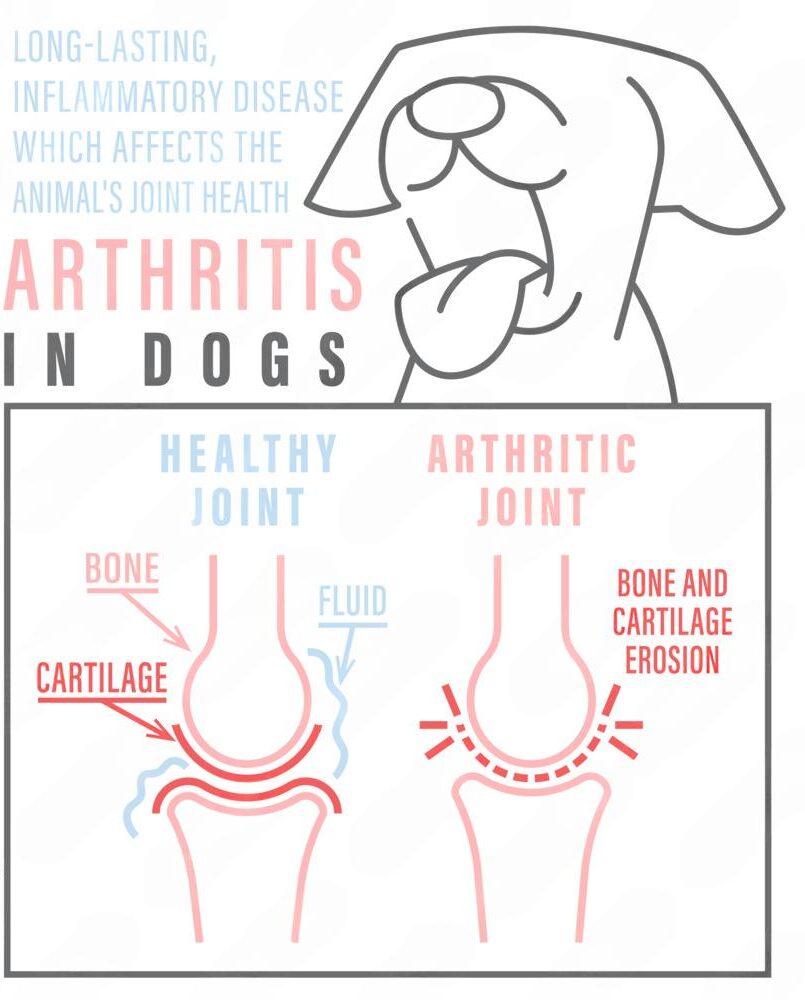
At its core, osteoarthritis is a complex interplay between mechanical stress and biological processes that disrupt the balance between cartilage degradation and synthesis. The primary components involved in this process include:
– Bone
– Articular Cartilage
– Synovial Fluid
– Joint Capsule
In a healthy joint, cartilage undergoes a continuous cycle of breakdown and regeneration. However, when this balance is disrupted—often due to factors such as trauma or obesity—the rate of cartilage degradation outpaces regeneration.
The progression of OA can be categorized into three stages:
Stage 1: Proteolytic breakdown of the cartilage matrix begins.
Stage 2: Fibrillation and erosion occur on the cartilage surface while breakdown products are released into synovial fluid.
Stage 3: Synovial inflammation ensues due to the production of proteases and pro-inflammatory cytokines.
Chronic inflammation plays a pivotal role in OA’s progression. Pro-inflammatory cytokines like Interleukin-1 alpha and beta and TNF-alpha exacerbate cartilage degradation by promoting matrix-degrading enzymes while inhibiting matrix protein synthesis.
Management Protocol: A Holistic Approach
Managing osteoarthritis in dogs requires a multifaceted approach aimed at reducing inflammation and supporting joint health. Here are some effective strategies:
Reducing Inflammation

Chronic inflammation is a primary contributor to pain and reduced mobility in arthritic dogs. While Non-Steroidal Anti-Inflammatory Drugs (NSAIDs) are commonly prescribed, dietary adjustments can also play a significant role in mitigating inflammation:
– Omega Fatty Acids: The balance between Omega-6 (pro-inflammatory) and Omega-3 (anti-inflammatory) fatty acids is crucial. A targeted ratio of 4:1 to 6:1 can help reduce inflammation. Incorporating oily fish or fish oils into your dog’s diet can enhance Omega-3 levels.
– Turmeric: The active compound curcumin found in turmeric has demonstrated anti-inflammatory properties. A study published in 2012 revealed that curcumin effectively lowered inflammation markers in dogs comparable to traditional anti-inflammatory medications.
– Boswellia Serrata: This herbal extract contains Boswellic acids known for their anti-inflammatory effects. A Swiss veterinary study found significant reductions in pain and lameness among dogs treated with Boswellia over six weeks.
Rebuilding Cartilage

To combat systemic cartilage degradation associated with OA, it’s essential to support normal cartilage metabolism:
– Glucosamine: An integral component of glycoproteins found in joints, glucosamine stimulates chondrocyte activation and proteoglycan synthesis essential for cartilage regeneration. Natural sources include chicken feet, bone broth, and beef trachea.
– Chondroitin Sulfate: As a sulfated glycosaminoglycan (GAG), chondroitin sulfate enhances proteoglycan production while reducing cartilage degeneration. Animal studies indicate that combining glucosamine with chondroitin sulfate yields superior results compared to individual supplementation.
Supporting Overall Joint Health
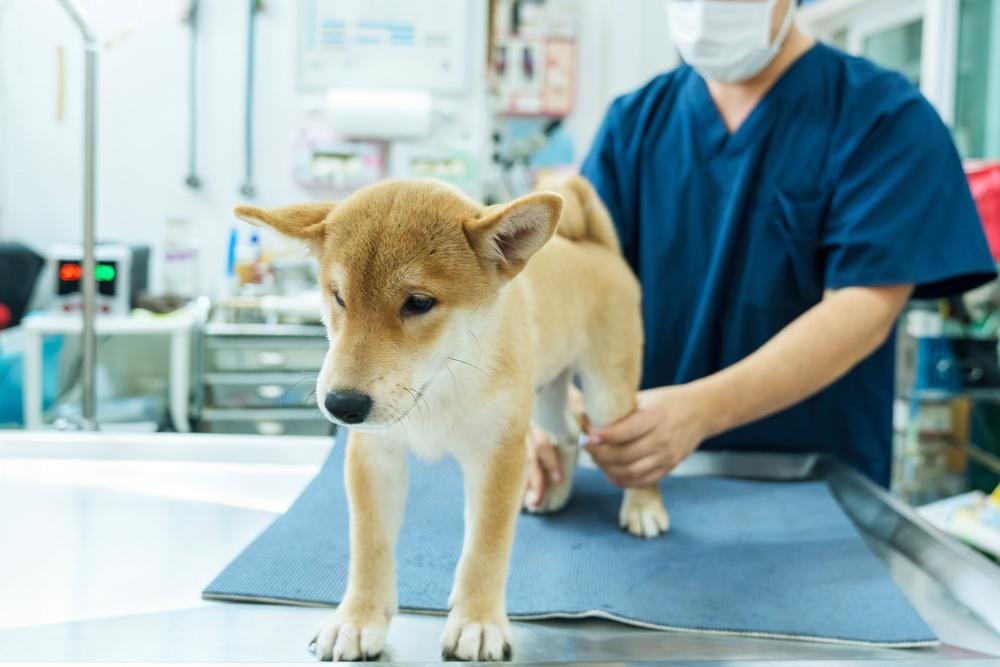
Ensuring your dog receives adequate vitamins and minerals is vital for maintaining bone and joint health:
– Calcium: Essential for bone health; puppies require at least 3g per 1000 kcal consumed while adults need 1g per 1000 kcal. Natural sources include raw meaty bones and eggshell powder.
– Phosphorus: Another indispensable mineral for bone health found in meats and fish.
– Vitamin D: Crucial for calcium absorption; it promotes bone mineralization.
– Antioxidants (Vitamins E & C): These vitamins help repair tissues while counteracting inflammation.
The Champion Supplement Combination
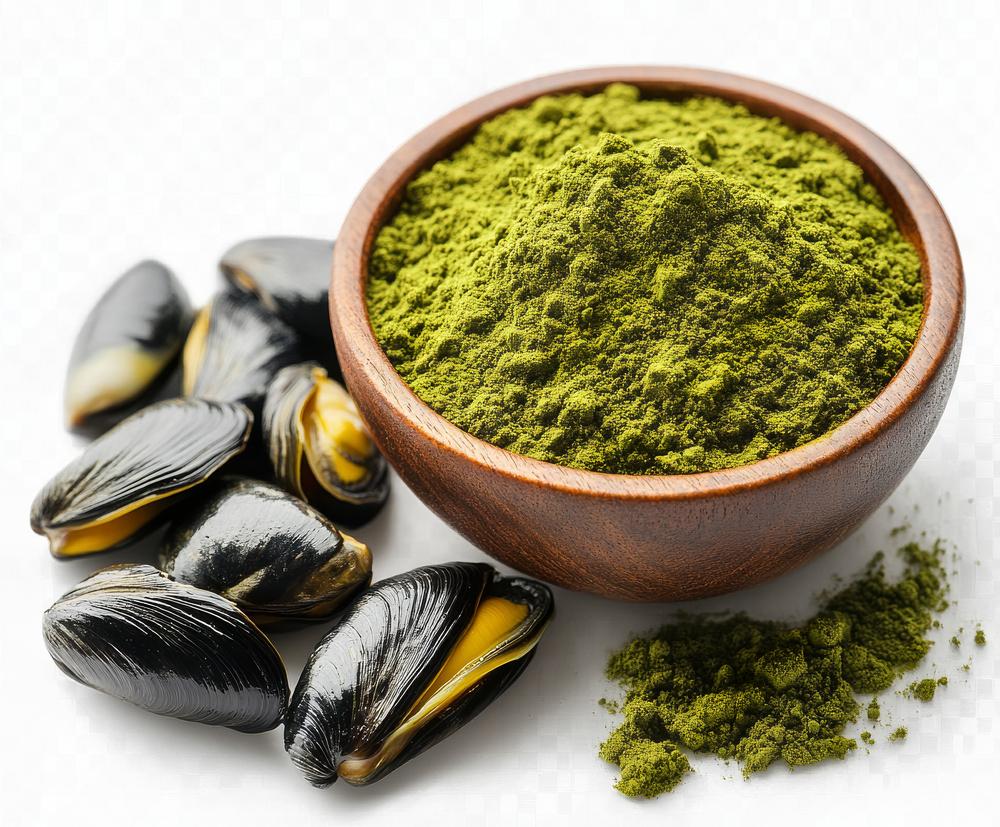
Recent research has identified a potent combination for managing osteoarthritis: Green Lipped Mussel (GLM) combined with fish oil. A blinded placebo-controlled study conducted in 2024 demonstrated that this combination effectively alleviated OA pain in dogs after just six weeks of administration—yielding results comparable to Meloxicam (an NSAID). This finding underscores the potential for GLM and fish oil supplementation as viable alternatives for long-term NSAID use in dogs with OA.
Conclusion: Empowering Pet Owners
As pet owners dedicated to providing the best care for our furry friends, understanding osteoarthritis is crucial for enhancing their quality of life. By recognizing risk factors, staying informed about pathophysiology, and implementing effective management strategies—including dietary modifications and supplements—we can help our beloved companions navigate the challenges posed by this debilitating condition.
Regular veterinary check-ups are essential for early detection and intervention. With proper care and attention, we can ensure our pets remain active participants in our lives well into their golden years.

